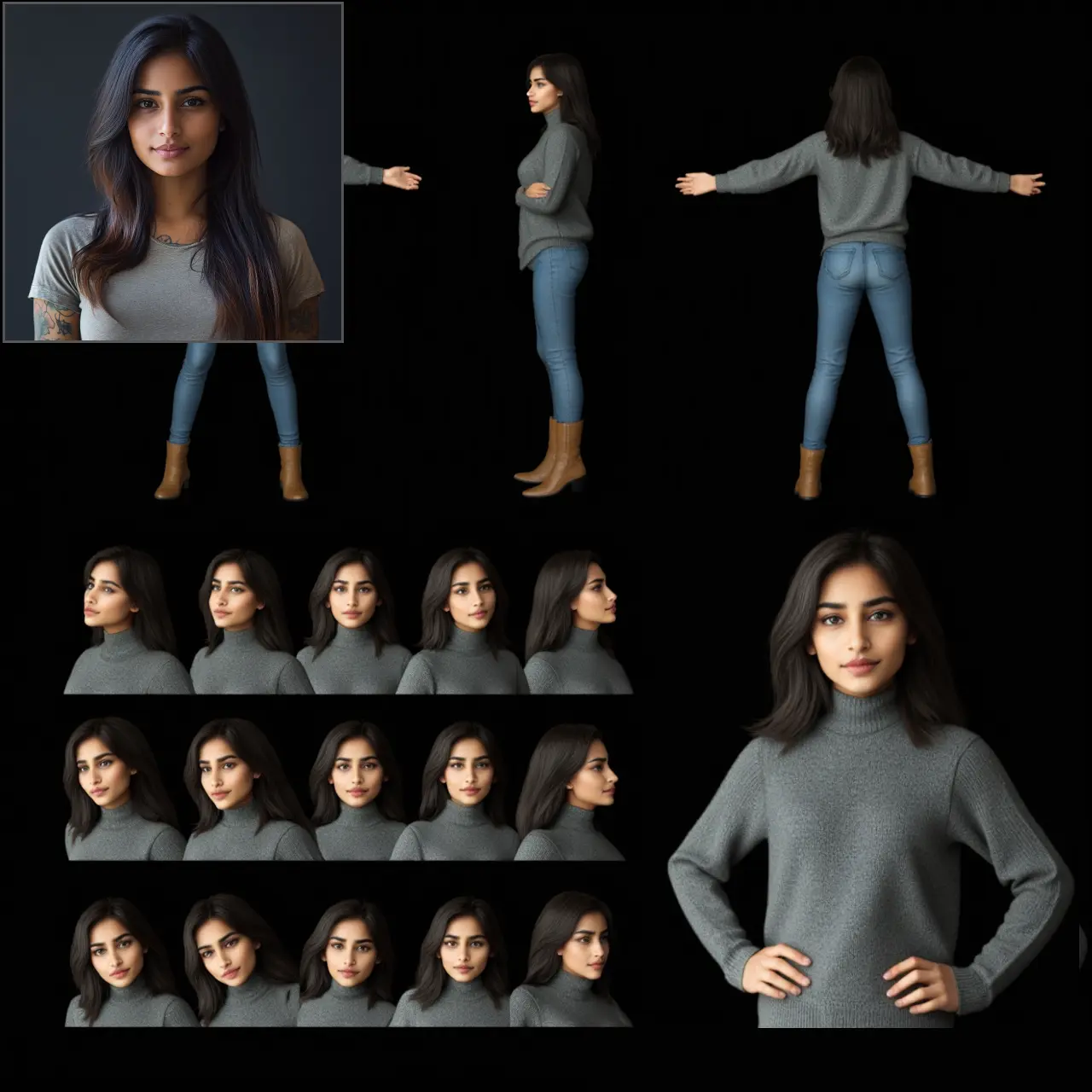ComfyUI Node: Mask Sequence Helper
MaskSequenceHelper
Categoryadvanced
mgfxer (Account age: 287days) Extension
ComfyUI-FrameFX Latest Updated
2024-07-20 Github Stars
0.02K
How to Install ComfyUI-FrameFX
Install this extension via the ComfyUI Manager by searching for ComfyUI-FrameFX- 1. Click the Manager button in the main menu
- 2. Select Custom Nodes Manager button
- 3. Enter ComfyUI-FrameFX in the search bar
Visit ComfyUI Online for ready-to-use ComfyUI environment
- Free trial available
- 16GB VRAM to 80GB VRAM GPU machines
- 400+ preloaded models/nodes
- Freedom to upload custom models/nodes
- 200+ ready-to-run workflows
- 100% private workspace with up to 200GB storage
- Dedicated Support
Mask Sequence Helper Description
Automate mask sequence creation and manipulation for smooth animation transitions and holds.
Mask Sequence Helper:
The MaskSequenceHelper node is designed to facilitate the creation and manipulation of mask sequences for animation workflows. This node is particularly useful for generating timelines and mask definitions that can be used to create smooth transitions and holds between different frames in an animation. By leveraging this node, you can automate the process of repeating images, adding transitions, and padding frames, which significantly streamlines the animation creation process. The primary goal of the MaskSequenceHelper is to provide a robust and flexible tool for managing complex mask sequences, making it easier to achieve professional-quality animations with minimal manual effort.
Mask Sequence Helper Input Parameters:
image_stream
The image_stream parameter is a required input that accepts a stream of images. This stream serves as the source material for generating the mask sequences. The images in the stream will be repeated and manipulated according to the specified hold and transition lengths to create the desired animation effect.
num_images
The num_images parameter specifies the number of images to be used in the sequence. It is an integer value with a default of 4 and a minimum of 1. This parameter determines how many images from the image_stream will be included in the animation cycle.
hold_length
The hold_length parameter defines the duration for which each image will be held before transitioning to the next image. It is an integer value with a default of 5 and a minimum of 1. A longer hold length will result in each image being displayed for a more extended period, creating a slower-paced animation.
transition_length
The transition_length parameter specifies the duration of the transition between consecutive images. It is an integer value with a default of 20 and a minimum of 1. This parameter controls the smoothness of the transition, with longer transition lengths resulting in more gradual changes between images.
padding_frames
The padding_frames parameter allows you to add extra frames at the end of the sequence. It is an integer value with a default of 0 and a minimum of 0. Padding frames can be useful for extending the duration of the final image in the sequence, ensuring a smooth loop or providing additional time for the last frame to be displayed.
Mask Sequence Helper Output Parameters:
first_timeline
The first_timeline output is a tensor containing the first sequence of images generated based on the input parameters. This timeline includes the repeated images, holds, and transitions as specified, providing a complete sequence for the first part of the animation.
second_timeline
The second_timeline output is a tensor containing the second sequence of images. This timeline is similar to the first but is offset to create a complementary sequence, which can be used for more complex animation effects or dual-layer animations.
first_text_output
The first_text_output is a string that contains the mask definitions for the first timeline. This text output provides a detailed description of the frame-by-frame mask values, which can be used for further processing or debugging.
second_text_output
The second_text_output is a string that contains the mask definitions for the second timeline. Like the first text output, this string provides a detailed description of the mask values for each frame in the second timeline.
total_frames
The total_frames output is an integer representing the total number of frames in the generated sequence. This value includes all the holds, transitions, and padding frames, providing a complete count of the frames in the animation.
Mask Sequence Helper Usage Tips:
- To create a smooth and professional-looking animation, experiment with different
hold_lengthandtransition_lengthvalues to find the optimal balance between image holds and transitions. - Use the
padding_framesparameter to extend the duration of the final image in the sequence, ensuring a smooth loop or providing additional time for the last frame to be displayed. - Review the
first_text_outputandsecond_text_outputstrings to understand the frame-by-frame mask values, which can be useful for debugging or further processing.
Mask Sequence Helper Common Errors and Solutions:
"IndexError: index out of range in self"
- Explanation: This error occurs when the
num_imagesparameter exceeds the number of images available in theimage_stream. - Solution: Ensure that the
num_imagesparameter does not exceed the number of images provided in theimage_stream.
"ValueError: negative dimensions are not allowed"
- Explanation: This error occurs when the
hold_lengthortransition_lengthparameters are set to negative values. - Solution: Ensure that both
hold_lengthandtransition_lengthparameters are set to positive integer values.
"TypeError: expected Tensor as element 0 in argument 0, but got list"
- Explanation: This error occurs when the input
image_streamis not provided as a tensor. - Solution: Ensure that the
image_streaminput is a tensor containing the images to be used in the sequence.
Mask Sequence Helper Related Nodes
RunComfy is the premier ComfyUI platform, offering ComfyUI online environment and services, along with ComfyUI workflows featuring stunning visuals. RunComfy also provides AI Models, enabling artists to harness the latest AI tools to create incredible art.


